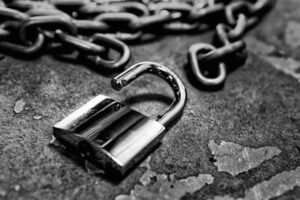Some people get confused when they hear the term telemarketing. Or, they don’t know they’re confused. That’s because it is often lumped together with cold calling or telesales, and it just isn’t the same.
So, what is telemarketing? And, how does it differ from other ways of using the phone to generate business?
What type of Selling do you do?
First and foremost, we need to consider where in the sales cycle the phone is used. Businesses have multiple objectives with both prospects and customers. They may need to:
- Make customer care or customer service calls to unearth new opportunities to do business
- Enable cross-sell and upsell to existing, lower spending clients
- Contact lapsed customers for resuscitation
- Invite prospects and/or customers to a webinar, conference or round table event
- Follow-up exhibition or event attendees
- Schedule a demo
- Contacting a cold prospect list to drum up interest for a product or service
There are plenty more. The telephone can be used to satisfy a number of different objectives. Sometimes, the start point is cold and sometimes it’s warm.
If you have a large database of contacts that you struggle to reach via other channels, picking up the phone at the right time just might generate a new stream of sales.
Consultative Selling or Just Selling?
In some ways, it’s the difference between solving a problem for a business and selling a product to a business. We view this form of business development as a marketing channel that facilitates the process of selling, not just the selling process alone.
Wikipedia tells us that it is a method of direct marketing in which a salesperson solicits prospective customers. But to me, that sounds quite mercenary.
In our opinion, it is a process in itself, and it’s a part of the marketing toolkit that should be integrated with other channels to market. The point is that customers rarely go from a no (or zero awareness) to a yes in a single call. And it’s equally unusual to simply identify a list of all the potential customers that are ready to commission projects, whatever the field. There’s much more work to do.
Warming Prospects up
Typically, prospects require some warming up. We might get lucky with the right timing, and it may be that a good caller can stimulate an interest that was latent. However, normally, a combination of calls and other marketing touchpoints over time will achieve the best outcome.
Perhaps a range of outbound direct marketing including mailers, emails, invitations to events, a webinar, coupled with a call or a series of calls, will do the job. In addition, inbound marketing supports sales goals. Content, in the form of videos and blogs, white papers and the like, can really enhance brand awareness, perception and brand credibility for the time when the shortlisting process begins. So a call now may not bear fruit, but it may result in an email or adding the prospect to an email database.
The First Call is Just the Start
The initial conversation may in turn, identify a future project or need that paves the way for a warmer call further down the line when the time is right or contract renewal is due. So it’s not just about the phone call. Phone-based outreach can be effective in helping organisations to build target lists through data validation, for example.
This could simply be through address checking or contact building or through telephone research. We can also have pre-sales calls to establish interest and qualify leads in or out of the sales funnel. This form of marketing can equally drive immediate revenue by unearthing hot leads or opportunities to do business. It can also contribute to the overall marketing effort by increasing the number of email sign-ups for a monthly newsletter, for example.
Depth of Qualification
The use of the phone can, without doubt, enhance the depth of qualification that can be achieved amongst your target prospect audience. Its use enables sellers to profile prospects much more tightly and stimulate the nature of leads your business requires.
The type, and quality, of lead you require may vary. As suggested above, a lead could range from a demo to an on site audit to a zoom call to an event invitation, all the way through to a F2F appointment to explore options. Of course, the phone can be used to actually close the sale at an appropriate time.
Ultimately, the approach and use is determined by a number of factors including your budget and the level of activity.
Make a Warm Call not a Cold One
In an ideal world, telemarketing shouldn’t be considered in isolation. It should be part of your overall marketing mix alongside the other activities that drive leads into your business. If you can make a call following up a warm prospect that filled out a contact form on your website indicating interest, that approach is likely to be far more productive than a pure cold call. Likewise, calls to existing clients will be more welcome than fresh calls to businesses that have never heard of you.
So, perhaps it isn’t quite as straightforward as it seems. What is certain is that the more tightly you can define your requirements, the more likely you are to achieve your goals.






